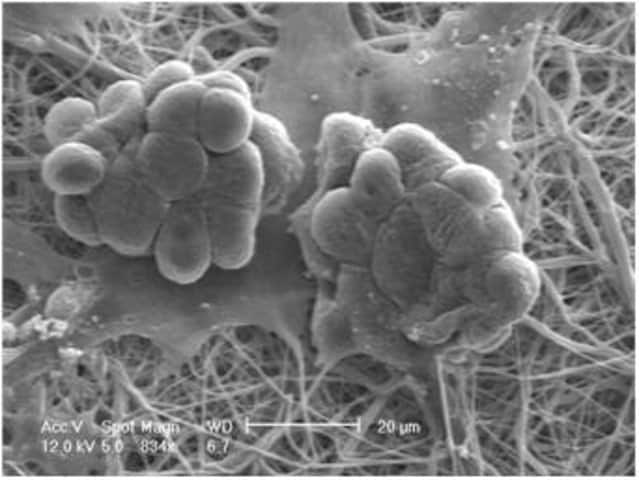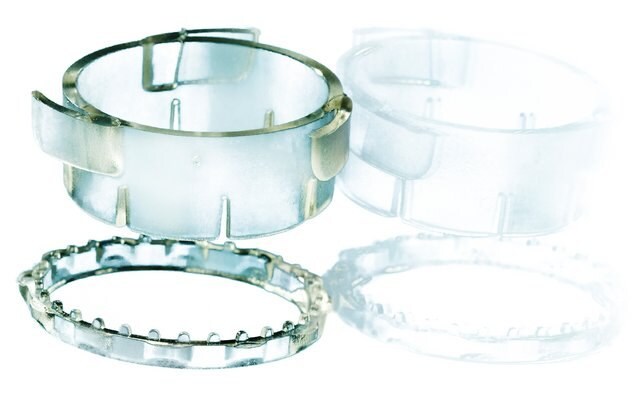Scaffolds for 3D Cell Culture

Mammalian cells in vivo grow in complex three-dimensional (3D) environments. The shape and chemical composition of the extracellular matrix (ECM) surrounding a cell can dictate many physiological responses. Traditional cell culture techniques and protocols are performed on two-dimensional (2D) surfaces, usually composed of glass or polystyrene. While the 2D method is accessible and convenient, several well-documented artifacts can arise from studying cells cultured under 2D conditions. Advanced cell culture methods and protocols have been developed to culture cells in 3D environments in vitro.
Tools facilitating the growth of cells in a three-dimensional environment are generally divided into scaffold-free and scaffold-based technologies. A well-established approach for 3D cell culture is to grow cells on structural scaffolds, typically composed of biopolymers that are arranged to mimic the physiological extracellular matrix (ECM). These scaffolds are usually designed as inserts that can be conveniently included into conventional cell culture workflows. In other instances, 3D scaffolds can be the starting point for complex tissue engineering projects, like developing artificial organs, establishing bioreactors to mass-produce cellular products, or developing lab-grown or cultured meat. Types of 3D cellular scaffolds we offer for applications are highlighted below.

Nanofiber Scaffolds
Nanofiber cell culture dishes, multiwell plates and plate inserts help to bridge the gap between 2D and 3D cell culture. Nanofibers are optically transparent to enable imaging and live-cell, real-time quantification of cell mobility. The nanofibers recapitulate the 3D architecture in vivo, and may also be coated with extracellular matrix proteins for applications that require it, such as cancer studies. Cells can be easily recovered from nanofiber scaffolds for downstream analysis.
Cells grown on nanofiber scaffolds have been demonstrated to expand rapidly and differentiate efficiently, and this method is free of the potential effects of support matrices containing animal products. This makes nanofibers optimal for IHC and for stem cell applications. Standard plate dimensions are compatible with automated equipment for high throughput compound screening for drug discovery and ADME/Tox studies. Choose aligned or randomly-oriented fibers in plates or dishes.
Collagen Scaffolds
SpongeCol® scaffolds are collagen sponges with a columnar, porous architecture. These unique columns present a porous network that allows cells and extracellular nutrients to flow in all directions, and that offers an enhanced surface area for cell attachment, facilitating growth and migration. Collagen sponge scaffolds are composed of purified Type I collagen which supports cellular attachment and proliferation. SphereCol® beads are coated with purified Type I human collagen derived from human fibroblast cell culture to enhance natural cell growth and function.
Polystyrene and Polycaprolactone Scaffolds
3D Biotek manufactures a range of porous polystyrene 3D insert scaffolds. Among the benefits of polystyrene are that it promotes cell growth and that it is optically clear for imaging by microscopy. Polycaprolactone (PCL) scaffolds present an alternative material for 3D tissue culture. PCL is a biodegradable polymer which has been used in the fabrication of surgical implants. Because of its biodegradable properties, it is also an applicable scaffold material for tissue engineering applications. PCL 3D Insert scaffolds are biodegradable with various precisely-controlled porous structures to meet your stem cell/tissue engineering research needs.
CellCrown™ Culture Inserts
CellCrown™ inserts are disposable inserts that immobilize a sample on a 6-, 12-, 24-, 48-, or 96- well plate. In addition to tissue, fibers, foils, membranes, and textiles can be fixed with CellCrown™ inserts in a stable position in the well. The sample may remain in position in the well during media exchange by means of a pipette tip inserted between well wall and the insert.
Products
To continue reading please sign in or create an account.
Don't Have An Account?